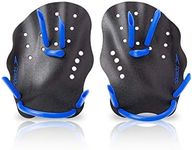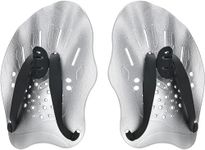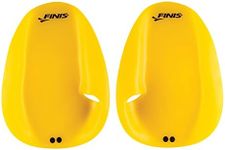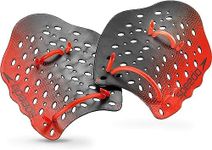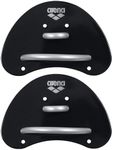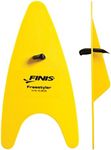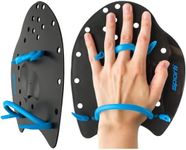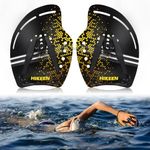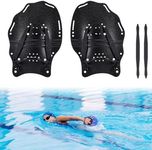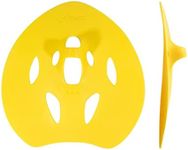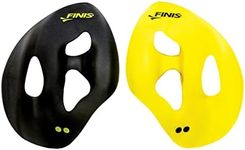Buying Guide for the Best Swim Hand Paddles
Swim hand paddles are a great tool for swimmers looking to improve their technique, strength, and endurance. They help you focus on your stroke mechanics and build upper body strength by increasing resistance in the water. When choosing swim hand paddles, it's important to consider several key specifications to ensure you get the best fit for your needs and skill level. Here are the main factors to consider:SizeThe size of the swim hand paddles is crucial because it affects the amount of resistance you will experience in the water. Larger paddles provide more resistance, which can help build strength but may also increase the risk of shoulder strain if you're not careful. Smaller paddles offer less resistance and are generally easier to handle, making them a good choice for beginners or those focusing on technique. To choose the right size, consider your swimming experience and goals. Beginners should start with smaller paddles, while more advanced swimmers can opt for larger ones to challenge their strength.
ShapeSwim hand paddles come in various shapes, each designed to target different aspects of your stroke. Flat paddles are the most common and are great for general strength training and technique improvement. Contoured paddles are designed to fit the natural shape of your hand, providing a more comfortable and ergonomic experience. Finger paddles, which cover only the fingers, are ideal for focusing on hand positioning and entry. To choose the right shape, think about what aspect of your stroke you want to improve. Flat paddles are versatile, while contoured and finger paddles are more specialized.
Strap DesignThe strap design of swim hand paddles affects how securely they stay on your hands and how comfortable they are to wear. Traditional paddles have adjustable straps that go around your fingers and wrist, providing a secure fit. Some newer designs feature a strapless or minimal strap design, relying on the natural pressure of your hand against the paddle to keep it in place. These can be more comfortable and allow for a more natural hand movement. When choosing a strap design, consider your comfort and how secure you want the paddles to feel. Beginners might prefer adjustable straps for a secure fit, while more experienced swimmers might enjoy the freedom of strapless designs.
MaterialSwim hand paddles are typically made from plastic or silicone. Plastic paddles are rigid and provide a lot of resistance, making them great for strength training. Silicone paddles are more flexible and comfortable, which can be beneficial for longer training sessions or for swimmers with sensitive skin. When choosing the material, think about your comfort and training goals. If you prioritize strength training, plastic paddles might be the best choice. If comfort is more important, especially for longer swims, silicone paddles could be a better fit.
Ventilation HolesMany swim hand paddles feature ventilation holes, which allow water to flow through the paddle. This reduces the amount of resistance and can make the paddles easier to control. Paddles with more holes are generally better for beginners or those focusing on technique, as they provide a more natural feel in the water. Paddles with fewer holes offer more resistance, making them suitable for strength training. To choose the right amount of ventilation, consider your skill level and training focus. Beginners and those working on technique should look for paddles with more holes, while advanced swimmers looking to build strength might prefer fewer holes.
